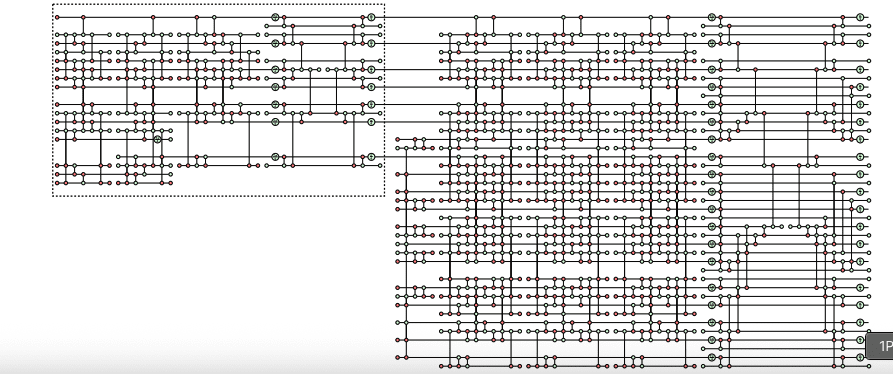The quest to build powerful quantum computers demands efficient ways to create and manipulate complex quantum states, but these states are often difficult to prepare using standard quantum operations. Kwok Ho Wan from Imperial College London and Zhenghao Zhong from the University of Oxford, along with their colleagues, now demonstrate a method for simulating the creation of these complex states, known as ‘magic state cultivation’, using significantly fewer computational steps than previously thought possible. Their approach represents the final state as a combination of simpler, Clifford-based operations, reducing the number of terms required by a substantial margin. This breakthrough simplifies the process of integrating cultivated states into larger quantum circuits, paving the way for more practical and scalable quantum computation by focusing on operationally relevant circuits with internal structure.
Cutting Stabiliser Decompositions for Magic State Simulation
This document details research exploring methods to efficiently simulate magic state cultivation, a technique for creating high-quality qubits for fault-tolerant quantum computation, using classical computers. The core idea is to leverage cutting stabiliser decompositions of the quantum circuits involved, reducing the computational cost of simulation. This involves representing circuits as sums of stabiliser states, efficiently handled by classical computers, by strategically dividing the circuit into smaller, manageable pieces. The research specifically targets magic state cultivation circuits, crucial for achieving fault tolerance.
The authors demonstrate, through numerical experiments, that their method significantly reduces the computational cost of simulation, potentially making it feasible with reasonable classical resources. They claim the average number of terms needed for simulation remains relatively low, even for complex circuits. Magic state cultivation creates high-fidelity magic states, specifically T-states, essential for universal quantum computation with fault tolerance. Stabiliser states and decomposition allow for efficient classical simulation, and cutting stabiliser decomposition further simplifies this process. ZX-Calculus, a graphical language for reasoning about quantum circuits, aids in developing this decomposition method. Numerical simulations validate the method and demonstrate its effectiveness, presenting a promising approach to reduce the computational cost of simulating magic state cultivation and accelerating the development of fault-tolerant quantum computers.
Simplified Magic State Circuit Simulation Achieved
Scientists have developed a method to simplify the simulation of magic state cultivation circuits, achieving a significant reduction in computational complexity. The team focused on decomposing these circuits into sums of Clifford ZX-diagrams, streamlining calculations and reducing the number of terms required for simulation. This approach outperforms previous methods, reducing the term count by a factor exceeding 10 compared to standard magic cat state decomposition techniques. Experiments reveal that, even when introducing realistic errors, the number of terms needed to represent the circuits remains manageable.
By subjecting the circuits to a single qubit depolarising error channel, where each edge experiences a Pauli-X, Y, or Z error with a probability of p/3, the team assessed the method’s robustness. Across error rates ranging from 10⁻⁴ to 10⁻³, the decomposition consistently required approximately 8 terms for a d=5 circuit and 4 terms for a d=3 circuit, on average. These results suggest that simulating magic state cultivation is feasible with a relatively small computational overhead compared to traditional stabiliser simulations.
ZX-Diagrams Simplify Quantum Circuit Simulation
This research presents a method for simplifying the classical simulation of quantum circuits used in magic state cultivation, a technique for creating the necessary resources for universal quantum computation. The team demonstrates that, on average, their approach, based on decomposing circuits into Clifford ZX-diagrams, reduces the number of terms required for simulation by a significant margin compared to existing methods. This simplification is particularly beneficial during the ‘escape stage’ of cultivation, where the resultant quantum state is integrated into a larger circuit, as it allows for tracking only Clifford terms. The findings suggest that magic state cultivation circuits with a relatively low term count, around 50, may be simulatable with a modest increase in computational effort compared to purely stabiliser circuits. This offers a pathway towards verifying the feasibility of these circuits before implementation on quantum hardware. The authors acknowledge that further development of numerical simulation tools is needed to fully validate these results and that the method’s applicability to different variants of magic state cultivation remains an open question.
